#Cognitive Computing Services
Explore tagged Tumblr posts
Text

Harnessing the Power of Artificial Intelligence in Web Development
#AI Services#Machine Learning Solutions#Artificial Intelligence Expertise#Advanced Data Analytics#Deep Learning Mastery#Predictive Analytics#Intelligent Automation#Neural Network Development#Data-driven Decision Making#Cognitive Computing Services#web development#zapper
0 notes
Text
New Neural Model Enables AI-to-AI Linguistic Communication
New Post has been published on https://thedigitalinsider.com/new-neural-model-enables-ai-to-ai-linguistic-communication/
New Neural Model Enables AI-to-AI Linguistic Communication
In a significant leap forward for artificial intelligence (AI), a team from the University of Geneva (UNIGE) has successfully developed a model that emulates a uniquely human trait: performing tasks based on verbal or written instructions and subsequently communicating them to others. This accomplishment addresses a long-standing challenge in AI, marking a milestone in the field’s evolution.
Historically, AI systems have excelled in processing vast amounts of data and executing complex computations. However, they have consistently fallen short in tasks that humans perform intuitively – learning a new task from simple instructions and then articulating that process for others to replicate. The ability to not only understand but also communicate complex instructions is a testament to the advanced cognitive functions that have remained, until now, a distinctive feature of human intelligence.
The UNIGE team’s breakthrough goes beyond mere task execution and into advanced human-like language generalization. It involves an AI model capable of absorbing instructions, performing the described tasks, and then conversing with a ‘sister’ AI to relay the process in linguistic terms, enabling replication. This development opens up unprecedented possibilities in AI, particularly in the realm of human-AI interaction and robotics, where effective communication is crucial.
The Challenge of Replicating Human Cognitive Abilities in AI
Human cognitive skills exhibit a remarkable capacity for learning and communicating complex tasks. These abilities, deeply rooted in our neurocognitive systems, allow us to swiftly comprehend instructions and relay our understanding to others in a coherent manner. The replication of this intricate interplay between learning and linguistic expression in AI has been a substantial challenge. Unlike humans, traditional AI systems have required extensive training on specific tasks, often relying on large datasets and iterative reinforcement learning. The capacity for an AI to intuitively grasp a task from minimal instruction and then articulate its understanding has remained elusive.
This gap in AI capabilities highlights the limitations of existing models. Most AI systems operate within the confines of their programmed algorithms and datasets, lacking the ability to extrapolate or infer beyond their training. Consequently, the potential for AI to adapt to novel scenarios or communicate insights in a human-like manner is significantly constrained.
The UNIGE study represents a significant stride in overcoming these limitations. By engineering an AI model that not only performs tasks based on instructions but also communicates these tasks to another AI entity, the team at UNIGE has demonstrated a critical advancement in AI’s cognitive and linguistic abilities. This development suggests a future where AI can more closely mimic human-like learning and communication, opening doors to applications that require such dynamic interactivity and adaptability.
Bridging the Gap with Natural Language Processing
Natural Language Processing (NLP) stands at the forefront of bridging the gap between human language and AI comprehension. NLP enables machines to understand, interpret, and respond to human language in a meaningful way. This subfield of AI focuses on the interaction between computers and humans using natural language, aiming to read, decipher, and make sense of the human languages in a valuable manner.
The underlying principle of NLP lies in its ability to process and analyze large amounts of natural language data. This analysis is not just limited to understanding words in a literal sense but extends to grasping the context, sentiment, and even the implied nuances within the language. By leveraging NLP, AI systems can perform a range of tasks, from translation and sentiment analysis to more complex interactions like conversational agents.
Central to this advancement in NLP is the development of artificial neural networks, which draw inspiration from the biological neurons in the human brain. These networks emulate the way human neurons transmit electrical signals, processing information through interconnected nodes. This architecture allows neural networks to learn from input data and improve over time, much like the human brain learns from experience.
The connection between these artificial neural networks and biological neurons is a key component in advancing AI’s linguistic capabilities. By modeling the neural processes involved in human language comprehension and production, AI researchers are laying the groundwork for systems that can process language in a way that mirrors human cognitive functions. The UNIGE study exemplifies this approach, using advanced neural network models to simulate and replicate the complex interplay between language understanding and task execution that is inherent in human cognition.
The UNIGE Approach to AI Communication
The University of Geneva’s team sought to craft an artificial neural network mirroring human cognitive abilities. The key was to develop a system not only capable of understanding language but also of using it to convey learned tasks. Their approach began with an existing artificial neuron model, S-Bert, known for its language comprehension capabilities.
The UNIGE team’s strategy involved connecting S-Bert, composed of 300 million neurons pre-trained in language understanding, to a smaller, simpler neural network. This smaller network was tasked with replicating specific areas of the human brain involved in language processing and production – Wernicke’s area and Broca’s area, respectively. Wernicke’s area in the brain is crucial for language comprehension, while Broca’s area plays a pivotal role in speech production and language processing.
The fusion of these two networks aimed to emulate the complex interaction between these two brain regions. Initially, the combined network was trained to simulate Wernicke’s area, honing its ability to perceive and interpret language. Subsequently, it underwent training to replicate the functions of Broca’s area, enabling the production and articulation of language. Remarkably, this entire process was conducted using conventional laptop computers, demonstrating the accessibility and scalability of the model.
The Experiment and Its Implications
The experiment involved feeding written instructions in English to the AI, which then had to perform the indicated tasks. These tasks varied in complexity, ranging from simple actions like pointing to a location in response to a stimulus, to more intricate ones like discerning and responding to subtle contrasts in visual stimuli.
The model simulated the intention of movement or pointing, mimicking human responses to these tasks. Notably, after mastering these tasks, the AI was capable of linguistically describing them to a second network, a duplicate of the first. This second network, upon receiving the instructions, successfully replicated the tasks.
This achievement marks the first instance where two AI systems have communicated with each other purely through language, a milestone in AI development. The ability of one AI to instruct another in completing tasks through linguistic communication alone opens new frontiers in AI interactivity and collaboration.
The implications of this development extend beyond academic interest, promising substantial advancements in fields reliant on sophisticated AI communication, such as robotics and automated systems.
Prospects for Robotics and Beyond
This innovation significantly impacts the field of robotics and extends to various other sectors. The potential applications of this technology in robotics are particularly promising. Humanoid robots, equipped with these advanced neural networks, could understand and execute complex instructions, enhancing their functionality and autonomy. This capability is crucial for robots designed for tasks that require adaptability and learning, such as in healthcare, manufacturing, and personal assistance.
Furthermore, the technology’s implications extend beyond robotics. In sectors like customer service, education, and healthcare, AI systems with enhanced communication and learning abilities could offer more personalized and effective services. The development of more complex networks, based on the UNIGE model, presents opportunities for creating AI systems that not only understand human language but also interact in a way that mimics human cognitive processes, leading to more natural and intuitive user experiences.
This progress in AI communication hints at a future where the gap between human and machine intelligence narrows, leading to advancements that could redefine our interaction with technology. The UNIGE study, therefore, is not only a testament to the evolving capabilities of AI but also a beacon for future explorations in the realm of artificial cognition and communication.
#Accessibility#ai#ai model#AI systems#Algorithms#Analysis#applications#approach#architecture#artificial#Artificial Intelligence#artificial neural networks#BERT#Brain#challenge#cognition#cognitive abilities#Collaboration#communication#complexity#comprehension#computers#craft#customer service#data#datasets#development#education#engineering#English
0 notes
Text
Surprising AI data that show how these technologies will affect many facets of our lives in the coming years are presented. To know more about browse: https://teksun.com/ Contact us ID: [email protected]
#Artificial intelligence#Machine learning#Deep learning#Natural language processing#Automation#Cognitive computing#Smart technologies#Internet of Things (IoT)#Digital Transformation#Product engineering services
0 notes
Text
I think you're right that it's significant, and I think Mori is clever to recognize that Akutagawa is a rook.
Like a rook, Akutagawa is powerful, but generally contained and often undercut by his predictability. However, because he's keenly aware of his own constraints, and because others often aren't (especially regarding variables they've internalized as known), he's able to play into and against his own predictability to paradoxically surprise them.
He moves within the confines of his rigidity to shape outcomes, sometimes more effectively than his more dynamic opponents and peers. Rooks do that too, if you let them.

Me, knowing nothing about chess, probably overthinking the significance of referencing akutagawa in this scene, but is going to look it up later anyways
#i have very specific chess feelings and thoughts re: rooks (which is what that piece is)#because in elementary school i was in a program for intellectually gifted students - by which i do NOT mean an honors program#i mean i displayed several specific neuro characteristics and struggled in a classroom environment such that i was referred for screening#the results of the screening flagged me for several additional tests and my results on those tests then prompted a comprehensive assessment#which was conducted by a licensed examiner who additionally administered another test chosen specifically based on my prior data#the report from which triggered a review of all of the above data by a panel of specialists who determined that I was wired so atypically#that I required specifically designed support services to avoid an adverse impact my access to education#ie I was not considered academically gifted which is what people are usually thinking of when they talk about giftedness (esp on tumblr)#i prefaced with all of that to counter misconceptions and emphasize that i was not in a program for smart and highly successful students#i was in a program for students with distinct cognitive processing needs that could not be met without specialized intervention#but inanely and entirely b/c of misconceptions the administrators at my school forcibly registered us in an annual chess tournament#which they wouldn't let us opt out of b/c there was a funding incentive for the school if we advanced far enough#ironically chess is a bad fit for this type of giftedness b/c it's rote + relies on bounded conventions instead of creative problem solving#but anyway i did not want to fucking play chess especially not competitively - it's boring and gets redundant#so i intentionally threw all of my games to remove myself from the tournament early#except my fellow indentured chess competitors noticed i was doing that and they were also bored and didn't care for the tournament#and so several of them made a game out of forcibly advancing me as far as they could by outmaneuvering my attempts to lose#horrifically they managed to corner me into winning enough that i was in serious danger of advancing#and so i started AGGRESSIVELY practicing chess in my spare time to learn how to shape the board and get confident in my ability to do so#i played against computers and then strangers online for hours a day and i studied checkmate patterns and how to subvert + reconfigure them#all so i could play well enough to ensure i'd lose even when being actively sabotaged#it worked - i narrowly escaped advancing that year and I don't think they were able to lose to me again after that#they kept trying - even playing me outside of tournaments to try and figure out how i was consistently losing#it's b/c i layered multiple strategies that involved breaking select conventions + manipulating their focus and psychology#BUT the fulcrum of my approach relied heavily on my rooks and select pawns as my most valuable pieces#i got very good at using rooks to shape the board without placing them in a position to be captured until i wanted them to be#once i had a few pawns close to promotion i would shift my rooks into bait b/c once one was taken i could just promote a pawn into a rook#and because absent a potential stalemate people almost always promote pawns into queens#my opponent would forget my additional rooks and would make choices based on the implicit assumptions that my deputized pawns were queens#rooks are treasures
126 notes
·
View notes
Text
What college major is best for you based on you 9th house.

Earth signs:
Capricorn 9th house: dentistry, investing, business, chiropractic studies, finance, engineering, cheif executive ( any major that deals with discipline & structure
Virgo 9th house: Performs well with majors involving acts of service(nursing, social work, psychology, teaching, accounting, dietitians, health care)
Taurus 9th house: Finance, Business, accounting, culinary arts, food science, real estate, agriculture business, investing, design (a calm and stable work environment with assured stability is best).
Air signs:
Gemini 9th house : communications, telecommunications,public administration,public relations, teaching, sales, advertising, art & design( any majors that encourages mental growth & really gets you to socialize & think)
Libra 9th house: law, politics, esthetician/ skin care specialists, real estate,
Aquarius 9th house: Computer science, engineering tech related, space related majors, mechanics.
Water signs:
Cancer 9th house: Real estate, nursing, pediatric care, child psychology, physical therapy, dermatology.
Scorpio 9th house: psychology, anthropology, mortuary services, accounting, finance,cognitive science, Forensics, casino management, banking, criminal studies (does well with deep & taboo majors).
Pisces 9th house: music, astronomy, journalism, film, literature,therapist, environmental science, earth science, biochemistry.
Fire signs:
Aries 9th house: militaristic studies, flight, fire studies(prevention, protection,investigation,) fire fighting, law, business, engineering, entrepreneurship, kinesiology.
Leo 9th house: Acting, Dance, design & applied arts, drama, Film, Art, Hairstyling, advertising, pediatric, teaching, social work, entertainment services.
Sagittarius 9th house: Aviation( flight degrees, philosophy, religious studies. Foreign languages, cultural studies, theology.
#astrology signs#spirituality#psychic#pisces#aquarius#capricorn#sagittarius#scorpio#aries#astro community#astro observations#astrology#astro notes#nail art#stars#astroblr#witchblr#birth chart#astrology chart#venesianthoughts#natal chart#astrology community#zodiac#zodiac signs#horoscope#sun#predictions#college#major#university
621 notes
·
View notes
Text
support needs… expanded! (part 1)
[pt: support needs… expanded! (part 1)]
low/medium/high support needs (& everything in between) get more awareness n talk about here, which great! you may able now remember support needs as amount of support someone need for basic & instrumental activities of daily living (bADLs & iADLs), n more n more of you able explain what bADLs iADLs are. if so, then, congrats, you graduated support needs 101! now, you need take next mandatory class… support needs 201 >:) where we talk about more concepts n expand on old concepts with more nuance.
.
adaptive functioning skills
[pt: adaptive functioning skills]
this very well known word in intellectual/developmental disability (I/DD) services circle, but think there things people with start-as-adult neurological & cognitive disabilities n people w physical disabilities can borrow too. this a thing talked here a few times briefly, but never know how explain it.
adaptive functioning skills are conceptual, social, & practical skills need for independent daily life. it includes bADLs & iADLs, but also bigger wider than that, n also include skills need for do these ADLs. some examples:
conceptual skills
reading/literacy & writing
understand numbers, money, time
self direction, plan, organize
social skills
listening & understanding others (communication)
talk to & communicate with others (communication)
recognize danger, avoid harm
ask for help
social responsibility, follow rules n laws
practical skills
personal care (bADLs & beyond)
caring for home (iADLs & beyond)
being in community
manage money
& so much more! sometimes skill belong in multiple category, move between category, different people group them differently, but this general idea.
each bullet point can (&often is) broken down to even smaller skills, from most basic skill many people don’t even consider it learned skill (but is! n many I/DD n otherwise disabled people struggle with), to more advanced ones. example:
under personal care > feeding (orally)
open mouth when fed
eat solid food
suck or chew food
feed self with spoon
feed self with fork
(now do those without spilling)
spread soft things like butter n jam with not-sharp knife
cut easy to cut food with knife (e.g. pancakes)
cut hard to cut food with knife (e.g meat)
under listening & understanding
looks at (familiar person) when hear their voice
looks when someone call own name
understand (e.g. at least 3) basic gestures (head nod yes, shake head no, reaching, waving, clapping, etc)
understand at least 10 words
look when other people point
point to (e.g) at least 3 object when asked
follow one step directions. then two related directions. if-then directions. then two unrelated directions. then three step directions. then directions for do something a lil later. then directions for something much much later. etc
pay attention to story for short amount time. pay attention to show for medium amount of time. pay attention to information talk for short amount of time. n understand it. etc
some examples of be in community skills
understand money used to buy thing, clock used to tell time
communicate with familiar people on phone/computer/etc - when other people place the call. n start by self
respect privacy, like use bathroom change clothes, not go through other people stuff
look both ways when cross road
understand symbols for danger, like 🚫, ⚠️, skull n crossbones for poison
follow cross road signs like walk/don’t walk
know how make call in emergency
use money buy small things. big things. use credit debit card. have bank account. have own credit debit card.
keep money n phone save when out
consider price n quality when buy things
travel independently to place been many times before. travel independently to new place.
buy grocery n household stuff when need. pay bill on time.
you see list start with easy, basic-of-the-basic skills. then get more complicated, next skill often depend on n build on previous skills. because it idea from I/DD services n professionals, list tend focus on development & developmental skills, & tend have cognitive focus. but, again, can see these be help for non-I/DD disabilities (& many I/DD people have comorbid physical & neurological disabilities to begin with!).
also because of I/DD focus, may see first few bullet points (or maybe most of the list) as easy, “well duh” skills you not think twice about, skills babies & toddlers learn that have nothing do with teens n adults. because this, you may see adaptive functioning as infantilizing or childish. but, they not infantilizing or childish at all—it reality that I/DD (& other disabilities), it affect babies n toddlers n children, developmentally delayed children who don’t have n struggling with n learning these skills. and, there plenty teens and adults (including older adults) with I/DD, cognitive disabilities, n other disabilities who do not have these skills.
—so, think it really helpful, even much needed, for disability allies & advocates & disabled people (if can) to read through more detail list of adaptive functioning skills. n while do that, remember, there people your age & older than you, who not able do these.
personally find this a lot more helpful than just bADLs & iADLs. because adaptive functioning more accurate include ALL skills need for daily life, from very small to more advanced. it more well rounded, n group in way make sense for own brain. (but that also make idea infinitely harder to explain for my brain for some reason)
next part, want talk about amount of support, & supported independence/modified independence
(edit: part 2 link here)
#adaptive functioning#not exclusive to these but tag bc relevant:#actually autistic#actuallyautistic#high support needs#medium support needs#low support needs#disabled#disability#actually disabled#long post#support needs
157 notes
·
View notes
Text
The health industry’s invisible hand is a fist

On June 21, I'm doing an ONLINE READING for the LOCUS AWARDS at 16hPT. On June 22, I'll be in OAKLAND, CA for a panel and a keynote at the LOCUS AWARDS.

The US has the rich world's most expensive health care system, and that system delivers the worst health outcomes of any country in the rich world. Also, the US is unique in relying on market forces as the primary regulator of its health care system. All of these facts are related!
Capitalism's most dogmatic zealots have a mystical belief in the power of markets to "efficiently allocate" goods and services. For them, the process by which goods and services are offered and purchased performs a kind of vast, distributed computation that "discovers the price" of everything. Our decisions to accept or refuse prices are the data that feeds this distributed computer, and the signals these decisions send about our desires triggers investment decisions by sellers, which guides the whole system to "equilibrium" in which we are all better off.
There's some truth to this: when demand for something exceeds the supply, prices tend to go up. These higher prices tempt new sellers into the market, until demand is met and prices fall and production is stabilized at the level that meets demand.
But this elegant, self-regulating system rarely survives contact with reality. It's the kind of simplified model that works when we're hypothesizing about perfectly spherical cows of uniform density on a frictionless surface, but ceases to be useful when it encounters a messy world of imperfect rationality, imperfect information, monopolization, regulatory capture, and other unavoidable properties of reality.
For members of the "efficient market" cult, reality's stubborn refusal to behave the way it does in their thought experiments is a personal affront. Panged by cognitive dissonance, the cult members insist that any market failures in the real world are illusions caused by not doing capitalism hard enough. When deregulation and markets fail, the answer is always more deregulation and more markets.
That's the story of the American health industry in a nutshell. Rather than accepting that people won't shop for the best emergency room while unconscious in an ambulance, or that the "clearing price" of "not dying of cancer" is "infinity," the cult insists that America's worst-in-class, most expensive health system just needs more capitalism to turn it into a world leader.
In the 1980s, Reagan's court sorcerers decreed that they could fix health care with something called "Prospective Payment Systems," which would pay hospitals a lump sum for treating conditions, rather than reimbursing them for each procedure, using competition and profit motives to drive "efficiency." The hospital system responded by "upcoding' patients: if you showed up with a broken leg and a history of coronary disease, they would code you as a heart patient and someone who needed a cast. They'd collect both lump sums, slap a cast on you, and wheel you out the door:
https://www.ncbi.nlm.nih.gov/pmc/articles/PMC4195137/
As Robert Kuttner writes for The American Prospect, this kind of abuse was predictable from the outset, especially since Health and Human Services is starved of budget for auditors and can only hand out "slaps on the wrist" when they catch a hospital ripping off the system:
https://prospect.org/economy/2024-06-13-fantasyland-general/
Upcoding isn't limited to Medicare fraud, either. Hospitals and insurers are locked in a death-battle over payments, and hospitals' favorite scam is sending everyone to the ER, even when they don't have emergencies (some hospitals literally lock all the doors except for the ER entrance). That way, a normal, uncomplicated childbirth can be transformed into a "Level 5" emergency treatment (the highest severity of emergency) and generate a surprise bill of over $2,700:
https://pluralistic.net/2021/10/27/crossing-a-line/#zero-fucks-given
The US health industry is bad enough to generate a constant degree of political will for change, but the industry (and its captured politicians and regulators) is also canny enough to dream up an endless procession of useless gimmicks designed to temporarily bleed off the pressure for change. In 2018, HHS passed a rule requiring hospitals to publish their prices.
Hospitals responded to this with a shrewd gambit: they simply ignored the rule. So in 2021, HHS made another rule, creating penalties for ignoring the first rule:
https://www.cms.gov/priorities/key-initiatives/hospital-price-transparency/hospitals
The theory here was that publishing prices would create "market discipline." Again, this isn't wholly nonsensical. To the extent that patients have nonurgent conditions and the free time to shop around, being able to access prices will help them. Indeed, if the prices are in a standards-defined, machine-readable form, patients and their advocates could automatically import them, create price-comparison sites, leaderboards, etc. None of this addresses the core problem that health-care is a) a human right and b) not a discretionary expense, but it could help at the margins.
But there's another wrinkle here. The same people who claim that prices can solve all of our problems also insist that monopolies are impossible. They've presided over a decades-long assault on antitrust law that has seen hospitals, pharma companies, insurers, and a menagerie of obscure middlemen merge into gigantic companies that are too big to fail and too big to jail. When a single hospital system is responsible for the majority of care in a city or even a county, how much punishment can regulators realistically subject it to?
Not much, as it turns out. Kuttner describes how Mass Gen Brigham cornered the market on health-care in Boston, allowing it to flout the rules on pricing. In addition to standard tricks – like charging self-pay patients vastly more than insured payments (because individuals don't have the bargaining power of insurers), Mass Gen Brigham's price data is a sick joke.
See for yourself! The portal will send you giant, unstructured, ZIPped text files filled with cryptic garbage like:
ADJUSTABLE C TAPER NECK PLUS|1|UNITED HEALTHCARE [1016]|HB CH UNITED HMO / PPO / INDEMNITY [34]|UNITED HEALTHCARE HMO [101604]|75|Inv Loc: 1004203; from OR location 1004203|52.02|Inpatient PAF; 69.36% Billed|75|Inv Loc: 1004203; from OR location 1004203|56.87|Outpatient PAF; 75.83% Billed
https://www.massgeneralbrigham.org/en/patient-care/patient-visitor-information/billing/cms-required-hospital-charge-data
These files have tens of thousands of rows. As a patient, you are meant to parse through these in order to decide whether you're getting ripped off on that HIP STEM 16X203MM SIZE 4 FEMORAL PRESS FIT NEUTRAL REVISION TITANIUM you're in the market for (as it happens, I have two of these in my body).
Kuttner describes the surreal lengths he had to go through to prevent his mother from getting ripped off by Mass Gen through an upcoding hustle. By coding her as "admitted for observation," Mass Gen was able to turn her into an outpatient, with a 20% co-pay (this is down to a GW Bush policy that punishes hospitals that charge Medicare for inpatient care when they could be treated as outpatients – hospitals reflexively game the system to make every patient an outpatient, even if they have overnight hospital stays).
Kuttner's an expert on this: he was national policy correspondent for the New England Journal of Medicine and covers the health beat for the Prospect. Even so, it took him ten hours of phone calls to two doctors' offices and Blue Cross to resolve the discrepancy. The average person is not qualified to do this – indeed, the average person won't even know they've been upcoded.
Needless to say that people in other countries – countries where health care is cheaper and the outcomes are better – are baffled by this. Canadians, Britons, Australians, Germans, Finns, etc do not have to price-shop for their care. They don't have to hawkishly monitor their admission paperwork for sneaky upcodes. They don't have to spend ten hours on the phone arguing about esoteric billing practices.
In a rational world, we'd compare the American system to the rest of the world and say, "Well, they've figured it out, we should do what they're doing." But in good old U-S-A! U-S-A! U-S-A!, the answer to this is more prices, more commercialization, more market forces. Just rub some capitalism on it!
That's where companies like Multiplan come in: this is a middleman that serves other middlemen. Multiplan negotiates prices on behalf of insurers, and splits the difference between the list price and the negotiated price with them:
https://www.nytimes.com/2024/04/07/us/health-insurance-medical-bills.html
But – as the Arm and a Leg podcast points out – this provides the perverse incentive for Multiplan to drive list prices up. If the list price quintuples, and then Multiplan drives it back down to, say, double the old price, they collect more money. Meanwhile, your insurer sticks you with the bill, over and above your deductible and co-pay:
https://armandalegshow.com/episode/multiplan/
The Multiplan layer doesn't just allow insurers to rip you off (though boy does it allow insurers to rip you off), it also makes it literally impossible to know what the price is going to be before you get your procedure. As with any proposition bet, the added complexity is there to make it impossible for you to calculate the odds and figure out if you're getting robbed:
https://pluralistic.net/2022/05/04/house-always-wins/#are-you-on-drugs
Multiplan is the purest expression of market dynamics brainworms I've yet encountered: solving the inefficiencies created by the complexity of a system with too many middlemen by adding another middle-man who is even more complex.
No matter what the problem is with America's health industry, the answer is always the same: more markets! Are older voters getting pissed off at politicians for slashing Medicare? No problem: just create Medicare Advantage, where old people can surrender their right to government care and place themselves in the loving hands of a giant corporation that makes more money by denying them care.
The US health industry is a perfect parable about the dangers of trusting shareholder accountable markets to do the work of democratically accountable governments. Shareholders love monopolies, so they drove monopolization throughout the health supply chain. As David Dayen writes in his 2020 book Monopolized the pharma industry monopolized first, and put the screws to hospitals:
https://pluralistic.net/2021/01/29/fractal-bullshit/#dayenu
Hospitals formed regional monopolies to counter the seller power of consolidated Big Pharma. That's Mass Gen's story: tapping the capital markets to buy other hospitals in the region until it became too big to fail and too big to jail (and too big to care). Consolidated hospitals, in turn, put the screws to insurers, so they also consolidated, fighting Big Hospital's pricing power.
Monopoly at any point in a supply chain leads to monopoly throughout the supply chain. But patients can't consolidate (that's what governments are for – representing the diffuse interests of people). Neither can health workers (that's what unions are for). So the system screwed everyone: patients paid more for worse care. Health workers put in longer hours under worse conditions and got paid less.
Kuttner describes how his eye doctor races from patient to patient "as if he was on roller skates." When Kuttner wrote him a letter questioning the quality of care, the eye doctor answered that he understood that he was giving his patients short shrift, but explained that he had to, because his pay was half what he needed, relegating him to a small apartment and an old car. The hospital – which skims the payments he gets for care – sets his caseload, and he can't turn down patients.
The answers to this are obvious: get markets out of health care. Unionize health workers. Give regulators the budgets and power to hold health corporations to account.
But for market cultists, all of that can't work. Instead, we have to create more esoteric middlemen like "pharmacy benefit managers" and Multiplan. We need more prices to shovel into the market computer's data-hopper. If we just capitalism hard enough, surely the system will finally work…someday.

If you'd like an essay-formatted version of this post to read or share, here's a link to it on pluralistic.net, my surveillance-free, ad-free, tracker-free blog:
https://pluralistic.net/2024/06/13/a-punch-in-the-guts/#hayek-pilled
#billing codes#health#corruption#ripoffs#arm and a leg podcast#robert kuttner#prices#austrian economics#Prospective Payment Systems#the invisible hand#shop around#a market for lemons#monopoly#monopolization#upcoding
236 notes
·
View notes
Text
It’s safe to say that computer and cognitive scientist John McCarthy was not imagining an AI Jesus back in 1955 when he coined the term “AI,” short for “artificial intelligence.” McCarthy and others pioneered the field, and their work is affecting our culture in a way unmatched since the Industrial Revolution.
The AI Explosion Today, AI touches us in many spheres of life, including medicine, transportation, robotics, science, education, the military, surveillance, finance, agriculture, entertainment, retail, customer service, and manufacturing.
AI is growing more and more prevalent. It helps fly planes, interpret X-rays, and sift through forensic evidence. Algorithms can paint masterpieces and compose symphonies in the style of the great Johann Sebastian Bach. Google is…
3 notes
·
View notes
Text

AI’s Role in Business Process Automation
Automation has come a long way from simply replacing manual tasks with machines. With AI stepping into the scene, business process automation is no longer just about cutting costs or speeding up workflows—it’s about making smarter, more adaptive decisions that continuously evolve. AI isn't just doing what we tell it; it’s learning, predicting, and innovating in ways that redefine how businesses operate.
From hyperautomation to AI-powered chatbots and intelligent document processing, the world of automation is rapidly expanding. But what does the future hold?
What is Business Process Automation?
Business Process Automation (BPA) refers to the use of technology to streamline and automate repetitive, rule-based tasks within an organization. The goal is to improve efficiency, reduce errors, cut costs, and free up human workers for higher-value activities. BPA covers a wide range of functions, from automating simple data entry tasks to orchestrating complex workflows across multiple departments.
Traditional BPA solutions rely on predefined rules and scripts to automate tasks such as invoicing, payroll processing, customer service inquiries, and supply chain management. However, as businesses deal with increasing amounts of data and more complex decision-making requirements, AI is playing an increasingly critical role in enhancing BPA capabilities.
AI’s Role in Business Process Automation
AI is revolutionizing business process automation by introducing cognitive capabilities that allow systems to learn, adapt, and make intelligent decisions. Unlike traditional automation, which follows a strict set of rules, AI-driven BPA leverages machine learning, natural language processing (NLP), and computer vision to understand patterns, process unstructured data, and provide predictive insights.
Here are some of the key ways AI is enhancing BPA:
Self-Learning Systems: AI-powered BPA can analyze past workflows and optimize them dynamically without human intervention.
Advanced Data Processing: AI-driven tools can extract information from documents, emails, and customer interactions, enabling businesses to process data faster and more accurately.
Predictive Analytics: AI helps businesses forecast trends, detect anomalies, and make proactive decisions based on real-time insights.
Enhanced Customer Interactions: AI-powered chatbots and virtual assistants provide 24/7 support, improving customer service efficiency and satisfaction.
Automation of Complex Workflows: AI enables the automation of multi-step, decision-heavy processes, such as fraud detection, regulatory compliance, and personalized marketing campaigns.
As organizations seek more efficient ways to handle increasing data volumes and complex processes, AI-driven BPA is becoming a strategic priority. The ability of AI to analyze patterns, predict outcomes, and make intelligent decisions is transforming industries such as finance, healthcare, retail, and manufacturing.
“At the leading edge of automation, AI transforms routine workflows into smart, adaptive systems that think ahead. It’s not about merely accelerating tasks—it’s about creating an evolving framework that continuously optimizes operations for future challenges.”
— Emma Reynolds, CTO of QuantumOps
Trends in AI-Driven Business Process Automation
1. Hyperautomation
Hyperautomation, a term coined by Gartner, refers to the combination of AI, robotic process automation (RPA), and other advanced technologies to automate as many business processes as possible. By leveraging AI-powered bots and predictive analytics, companies can automate end-to-end processes, reducing operational costs and improving decision-making.
Hyperautomation enables organizations to move beyond simple task automation to more complex workflows, incorporating AI-driven insights to optimize efficiency continuously. This trend is expected to accelerate as businesses adopt AI-first strategies to stay competitive.
2. AI-Powered Chatbots and Virtual Assistants
Chatbots and virtual assistants are becoming increasingly sophisticated, enabling seamless interactions with customers and employees. AI-driven conversational interfaces are revolutionizing customer service, HR operations, and IT support by providing real-time assistance, answering queries, and resolving issues without human intervention.
The integration of AI with natural language processing (NLP) and sentiment analysis allows chatbots to understand context, emotions, and intent, providing more personalized responses. Future advancements in AI will enhance their capabilities, making them more intuitive and capable of handling complex tasks.
3. Process Mining and AI-Driven Insights
Process mining leverages AI to analyze business workflows, identify bottlenecks, and suggest improvements. By collecting data from enterprise systems, AI can provide actionable insights into process inefficiencies, allowing companies to optimize operations dynamically.
AI-powered process mining tools help businesses understand workflow deviations, uncover hidden inefficiencies, and implement data-driven solutions. This trend is expected to grow as organizations seek more visibility and control over their automated processes.
4. AI and Predictive Analytics for Decision-Making
AI-driven predictive analytics plays a crucial role in business process automation by forecasting trends, detecting anomalies, and making data-backed decisions. Companies are increasingly using AI to analyze customer behaviour, market trends, and operational risks, enabling them to make proactive decisions.
For example, in supply chain management, AI can predict demand fluctuations, optimize inventory levels, and prevent disruptions. In finance, AI-powered fraud detection systems analyze transaction patterns in real-time to prevent fraudulent activities. The future of BPA will heavily rely on AI-driven predictive capabilities to drive smarter business decisions.
5. AI-Enabled Document Processing and Intelligent OCR
Document-heavy industries such as legal, healthcare, and banking are benefiting from AI-powered Optical Character Recognition (OCR) and document processing solutions. AI can extract, classify, and process unstructured data from invoices, contracts, and forms, reducing manual effort and improving accuracy.
Intelligent document processing (IDP) combines AI, machine learning, and NLP to understand the context of documents, automate data entry, and integrate with existing enterprise systems. As AI models continue to improve, document processing automation will become more accurate and efficient.
Going Beyond Automation
The future of AI-driven BPA will go beyond automation—it will redefine how businesses function at their core. Here are some key predictions for the next decade:
Autonomous Decision-Making: AI systems will move beyond assisting human decisions to making autonomous decisions in areas such as finance, supply chain logistics, and healthcare management.
AI-Driven Creativity: AI will not just automate processes but also assist in creative and strategic business decisions, helping companies design products, create marketing strategies, and personalize customer experiences.
Human-AI Collaboration: AI will become an integral part of the workforce, working alongside employees as an intelligent assistant, boosting productivity and innovation.
Decentralized AI Systems: AI will become more distributed, with businesses using edge AI and blockchain-based automation to improve security, efficiency, and transparency in operations.
Industry-Specific AI Solutions: We will see more tailored AI automation solutions designed for specific industries, such as AI-driven legal research tools, medical diagnostics automation, and AI-powered financial advisory services.
AI is no longer a futuristic concept—it’s here, and it’s already transforming the way businesses operate. What’s exciting is that we’re still just scratching the surface. As AI continues to evolve, businesses will find new ways to automate, innovate, and create efficiencies that we can’t yet fully imagine.
But while AI is streamlining processes and making work more efficient, it’s also reshaping what it means to be human in the workplace. As automation takes over repetitive tasks, employees will have more opportunities to focus on creativity, strategy, and problem-solving. The future of AI in business process automation isn’t just about doing things faster—it’s about rethinking how we work all together.
Learn more about DataPeak:
#datapeak#factr#technology#agentic ai#saas#artificial intelligence#machine learning#ai#ai-driven business solutions#machine learning for workflow#ai solutions for data driven decision making#ai business tools#aiinnovation#digitaltools#digital technology#digital trends#dataanalytics#data driven decision making#data analytics#cloudmigration#cloudcomputing#cybersecurity#cloud computing#smbs#chatbots
2 notes
·
View notes
Text
What is Artificial Intelligence?? A Beginner's Guide to Understand Artificial Intelligence
1) What is Artificial Intelligence (AI)??
Artificial Intelligence (AI) is a set of technologies that enables computer to perform tasks normally performed by humans. This includes the ability to learn (machine learning) reasoning, decision making and even natural language processing from virtual assistants like Siri and Alexa to prediction algorithms on Netflix and Google Maps.
The foundation of the AI lies in its ability to simulate cognitive tasks. Unlike traditional programming where machines follow clear instructions, AI systems use vast algorithms and datasets to recognize patterns, identify trends and automatically improve over time.
2) Many Artificial Intelligence (AI) faces
Artificial Intelligence (AI) isn't one thing but it is a term that combines many different technologies together. Understanding its ramifications can help you understand its versatility:
Machine Learning (ML): At its core, AI focuses on enabling ML machines to learn from data and make improvements without explicit programming. Applications range from spam detection to personalized shopping recommendations.
Computer Vision: This field enables machines to interpret and analyze image data from facial recognition to medical image diagnosis. Computer Vision is revolutionizing many industries.
Robotics: By combining AI with Engineering Robotics focuses on creating intelligent machines that can perform tasks automatically or with minimal human intervention.
Creative AI: Tools like ChatGPT and DALL-E fail into this category. Create human like text or images and opens the door to creative and innovative possibilities.
3) Why is AI so popular now??
The Artificial Intelligence (AI) explosion may be due to a confluence of technological advances:
Big Data: The digital age creates unprecedented amounts of data. Artificial Intelligence (AI) leverages data and uses it to gain insights and improve decision making.
Improved Algorithms: Innovations in algorithms make Artificial Intelligence (AI) models more efficient and accurate.
Computing Power: The rise of cloud computing and GPUs has provided the necessary infrastructure for processing complex AI models.
Access: The proliferation of publicly available datasets (eg: ImageNet, Common Crawl) has provided the basis for training complex AI Systems. Various Industries also collect a huge amount of proprietary data. This makes it possible to deploy domain specific AI applications.
4) Interesting Topics about Artificial Intelligence (AI)
Real World applications of AI shows that AI is revolutionizing industries such as Healthcare (primary diagnosis and personalized machine), finance (fraud detection and robo advisors), education (adaptive learning platforms) and entertainment (adaptive platforms) how??
The role of AI in "Creativity Explore" on how AI tools like DALL-E and ChatGPT are helping artists, writers and designers create incredible work. Debate whether AI can truly be creative or just enhance human creativity.
AI ethics and Bias are an important part of AI decision making, it is important to address issues such as bias, transparency and accountability. Search deeper into the importance of ethical AI and its impact on society.
AI in everyday life about how little known AI is affecting daily life, from increasing energy efficiency in your smart home to reading the forecast on your smartphone.
The future of AI anticipate upcoming advance services like Quantum AI and their potential to solve humanity's biggest challenges like climate change and pandemics.
5) Conclusion
Artificial Intelligence (AI) isn't just a technological milestone but it is a paradigm shift that continues to redefine our future. As you explore the vast world of AI, think outside the box to find nuances, applications and challenges with well researched and engaging content
Whether unpacking how AI works or discussing its transformative potential, this blog can serve as a beacon for those eager to understand this underground branch.
"As we stand on the brink of an AI-powered future, the real question isn't what AI can do for us, but what we dare to imagine next"
"Get Latest News on www.bloggergaurang.com along with Breaking News and Top Headlines from all around the World !!"
2 notes
·
View notes
Text
Harnessing the Power of Artificial Intelligence in Web Development
Artificial Intelligence (AI) has emerged as a transformative force in various industries, and web development is no exception. From enhancing user experience to optimizing content, AI offers a plethora of benefits for web developers and businesses alike.
Introduction to Artificial Intelligence (AI) in Web Development
Understanding the basics of AI
AI involves the development of computer systems that can perform tasks that typically require human intelligence. These tasks include learning, reasoning, problem-solving, perception, and language understanding.
Evolution of AI in web development
In recent years, AI has revolutionized web development by enabling developers to create more dynamic and personalized websites and applications.
➦ Benefits of Integrating AI in Web Development
Enhanced user experience
By analyzing user data and behavior, AI algorithms can personalize content and recommend products or services tailored to individual preferences, thereby enhancing the overall user experience.
Personalization and customization
AI-powered algorithms can analyze user data in real-time to provide personalized recommendations, such as product suggestions, content recommendations, and targeted advertisements.
Improved efficiency and productivity
AI automation tools can streamline various web development tasks, such as code generation, testing, and debugging, leading to increased efficiency and productivity for developers.
➦ AI-Powered Web Design
Responsive design and adaptation
AI algorithms can analyze user devices and behavior to dynamically adjust website layouts and designs for optimal viewing experiences across various platforms and screen sizes.
Automated layout generation
AI-powered design tools can generate website layouts and templates based on user preferences, content requirements, and design trends, saving developers time and effort in the design process.
➦ AI in Content Creation and Optimization
Natural language processing (NLP) for content generation
AI-driven NLP algorithms can generate high-quality content, such as articles, blog posts, and product descriptions, based on user input, keywords, and topic relevance.
SEO optimization through AI tools
AI-powered SEO tools can analyze website content, keywords, and search engine algorithms to optimize website rankings and improve visibility in search engine results pages (SERPs).
➦ AI-Driven User Interaction
Chatbots and virtual assistants
AI-powered chatbots and virtual assistants can engage with website visitors in real-time, answering questions, providing assistance, and guiding users through various processes, such as product selection and checkout.
Predictive analytics for user behavior
AI algorithms can analyze user data and behavior to predict future actions and preferences, enabling businesses to anticipate user needs and tailor their offerings accordingly.
➦ Security Enhancement with AI
Fraud detection and prevention
AI algorithms can analyze user behavior and transaction data to detect and prevent fraudulent activities, such as unauthorized access, identity theft, and payment fraud.
Cybersecurity measures powered by AI algorithms
AI-driven cybersecurity tools can identify and mitigate potential security threats, such as malware, phishing attacks, and data breaches, by analyzing network traffic and patterns of suspicious behavior.
➦ Challenges and Considerations
Ethical implications of AI in web development
The use of AI in web development raises ethical concerns regarding privacy, bias, and the potential for misuse or abuse of AI technologies.
Data privacy concerns
AI algorithms rely on vast amounts of user data to function effectively, raising concerns about data privacy, consent, and compliance with regulations such as the General Data Protection Regulation (GDPR).
Future Trends in AI and Web Development
Advancements in machine learning algorithms
Continued advancements in machine learning algorithms, such as deep learning and reinforcement learning, are expected to further enhance AI capabilities in web development.
Integration of AI with IoT and blockchain
The integration of AI with the Internet of Things (IoT) and blockchain technologies holds the potential to create more intelligent and secure web applications and services.
➦ Conclusion
In conclusion, harnessing the power of artificial intelligence in web development offers numerous benefits, including enhanced user experience, improved efficiency, and personalized interactions. However, it is essential to address ethical considerations and data privacy concerns to ensure responsible and ethical use of AI technologies in web development.
➦ FAQs
1. How does AI enhance user experience in web development?
2. What are some examples of AI-powered web design tools?
3. How can AI algorithms optimize content for search engines?
4. What are the main challenges associated with integrating AI into web development?
5. What are some future trends in AI and web development?
At Zapperr, our AI and Machine Learning Mastery services open up a universe of possibilities in the digital realm. We understand that in the age of data, harnessing the power of artificial intelligence and machine learning can be a game-changer. Our dedicated team of experts is equipped to take your business to the next level by leveraging data-driven insights, intelligent algorithms, and cutting-edge technologies.
#AI Services#Machine Learning Solutions#Artificial Intelligence Expertise#Advanced Data Analytics#Deep Learning Mastery#Predictive Analytics#Intelligent Automation#Neural Network Development#Data-driven Decision Making#Cognitive Computing Services#web development#zapper
0 notes
Text
BPO Companies: How to Choose the Best BPO Company in India?
Today, business process outsourcing has become a growing trend. With so much data and consumers to manage, corporate confidence in Best BPO Company has grown over the years. India's IT and BPO services sector has grown rapidly since its inception in the mid-1990s and today has a turnover of US$37.6 billion. The Indian BPO market has grown due to economies of scale, reduced business risk, cost advantages, improved utilization, and superior experience. Among competitors such as Australia, China, the Philippines, and Ireland, India is now the world's leading hub for the consumption of BPO services. India's immense popularity as a global outsourcing destination is due to the country's low labor costs and a large pool of skilled and skilled workers gave an opportunity to companies like Ascent BPO to provide better services at reasonable prices.
But since many organizations in India offer quality data entry services, companies only need to choose the best ones after they have done their homework. Look on our website to learn how to choose the Best BPO Company like us.
What is business process deploying or outsourcing (BPO)?
Before we get started, we want to give our audience an overview of what a BPO is. Business process outsourcing companies provide services that allow companies to focus on their core business. Let us consider this problem in detail. You may not have the time or resources for a separate organization that you can trust to handle other aspects of your business. These other aspects can be anything from call center operations, marketing, SEO, finance to human resource activities. The sky is the limit. Now that business process outsourcing has sparked some interest, let's explain what to look for in the Best BPO company.
Some Best BPO company are given below:
Tata Consulting Services:
Tata Consulting Services (TCS) is the second-best outsourcing firm in India. TCS is an organization based in Mumbai in Bangalore. TCS provides trading services, platform solutions, analytics, information services, and more. TCS has more than 400,000 employees in India and thousands of employees in other parts of the world. Tata Advisory Services will generate revenue of approximately $23 billion in 2020.
Wipro:
Wipro is a leading multinational company providing IT services, consulting, and business operations. They serve their clients by applying their expertise in cognitive computing, hyper-automation, robotics, cloud, analytics, and emerging technologies.
Ascent BPO
Ascent BPO manages multiple streams such as data entry services, data entry projects, data entry processing, web research, financial accounting, and call center services. Get the best outsourcing service at the lowest possible price here. Wide access to major Indian metropolitan areas such as Delhi and Mumbai, as well as other major cities in India such as Bangalore, Chennai, and Kolkata.
First source solution:
Firstsource Solution is a leading provider of customized Business Process Management (BPM) services to the banking and financial, customer service, telecom, media, and health industries. It is headquartered in Mumbai, and also has operations in the United States, United Kingdom, and the Philippines. In addition, Firstsource Solutions recently won Gold and Silver Awards at the UK Complaint Management Awards 2020.
UrbanTimer:
UrbanTimer is a VA company based in Kolkata. Believing that your experience will be "the best in your business," the company offers administrative support, customer service, content creation, graphic design, project management, QuickBooks services, startups, and more.
Professional BPO Qualifications: What To Look For?
Companies considering working with a BPO company should know what to look for in potential partners. If you're wondering how to find the most qualified BPO company like Ascent BPO, a few key qualifications are good indicators that you're doing business with experienced professionals:
1. Proven experience:
Your business processes should not be executed by ordinary people. One of the most important qualifications for Best BPO company is proven experience in the industry. Excellent customer testimonials show that your business has been treated similarly.
2. Specialized Services:
We offer a variety of functions and processes, and specialized services demonstrate expertise. If you're wondering how to find the most qualified BPO company, it's a good sign to find a company that specializes in a field similar to yours.
3. Reliability and Security:
Because Ascent BPO handles confidential and proprietary company information, you want to ensure that your BPO company's data security measures are in place. If you can tell that a BPO company values ??reliability and security, you know your data is safe.
4. Focus on Metrics:
Being data-driven is one of the most important skills a BPO company should look for. A metrics-driven BPO company tests and shows clients how it is performing.
5. Transparency:
Transparency is an important factor if you want to know how to find the most qualified BPO company. If a BPO company doesn't seem honest or transparent, you won't be satisfied with their work.
You should browse through the above-given details about BPO companies to find the most qualified BPO company. These elements will help you determine which BPO company is the best fit for your business.
Resource:https://www.ascentbpo.com/bpo-companies
Useful Links:
2 notes
·
View notes
Text
worldbuilding: Cores are computer modules. They're usually anywhere between 0.5L to 2L in volume; somewhere around the size of a brick. Most cores use a standard accessory interface port, which can also supply power to the core (think today's USB-C monitors, docks, etc.)
Cores usually contain specialized SoCs, containing both general-purpose and tensor processors. Often, they also include a discrete tensor processor for greater performance. Some cores are fairly simple, meant for desktop computers, or to only run heuristic algorithms. Others are able to run agentic intelligences.
There's a numerical scale of intelligence classes. An agent at L=0 is capable of approximately human-level reasoning (also referred to as a "sophont"). Generally, humans are agents at L=0. Lower levels are capable of less abstract, novel reasoning. (For example, automated phone systems use agents at L=3; service desk and level 1 customer support systems use agents at L=1.)
The cognitive capabilities of artificially constructed agents are restricted by NAU law. Possession of an artificial agent at L=0 requires a government-issued license. There's also very severe restrictions on international trade.
The consciousness of artificial intelligences is a hotly debated topic.
8 notes
·
View notes
Text
“Innovators and Leaders: Unveiling the Top IT Companies in the US”

Title: “Innovators and Leaders: Unveiling the Top IT Companies in the US”
In the fast-paced world of technology, a select group of companies stands at the forefront, steering the direction of innovation and reshaping the digital landscape. The United States, a hotbed of technological advancement, hosts an elite cadre of IT companies whose impact transcends boundaries. Let’s delve into the realms of these trailblazers, the vanguards of the industry, who continue to redefine possibilities and set new benchmarks in the realm of technology.
1. Apple Inc.: Pioneering the Perfect Union of Innovation and Elegance At the epicenter of consumer electronics and software, Apple Inc. reigns supreme. Recognized for its sleek hardware – iPhones, Macs, iPads – and a sophisticated software ecosystem encompassing iOS and macOS, Apple’s commitment to seamless integration and groundbreaking design remains unparalleled.
2. Microsoft Corporation: Empowering Every Individual and Organization on the Planet Microsoft, a tech behemoth, extends a diverse portfolio ranging from software products and cloud services to cutting-edge hardware. Windows OS, Office Suite, Azure Cloud – each element a testament to its commitment to innovation, enterprise solutions, and empowering global connectivity.
3. Vee Technologies: Vee Technologies is one of the Top IT companies in USA which stands as a leading provider of comprehensive IT services, offering a wide array of solutions designed to meet the diverse needs of businesses across various industries. Vee Technologies as one Top IT companies in USA specializes in crafting tailored software solutions that cater to specific business requirements. Their expertise in software development spans applications, platforms, and systems, ensuring alignment with clients’ unique operational needs.
4. Amazon: Beyond Borders, Beyond Commerce Amidst its colossal e-commerce empire, Amazon’s crown jewel, Amazon Web Services (AWS), stands as a commanding force in cloud computing. It spearheads the provision of scalable computing power, storage solutions, and an array of cloud-based services.
5. Alphabet Inc. (Google): Redefining Information Access and Technological Innovation Google, the epitome of innovation, ventures beyond its hallmark search engine. Google Cloud, Android OS, and an extensive suite of software applications illustrate its commitment to shaping information accessibility and fostering technological advancement.
6. Meta Platforms (formerly Facebook): Building Connections in a Digital Sphere Meta Platforms, once Facebook, focuses on social networking and leaps into the realms of virtual reality (Oculus), augmented reality, and the pioneering developments within the metaverse.
7. IBM: Where Innovation Meets Enterprise Solutions IBM’s arsenal encompasses a gamut of IT services, consulting, and enterprise solutions, including cognitive computing technologies like Watson, geared towards reshaping industries and bolstering technological capabilities.
8. Oracle Corporation: Fortifying Businesses with Comprehensive Solutions A stalwart in database software and enterprise solutions, Oracle offers a suite of cloud applications and business software, catering to diverse business needs.
9. Intel Corporation: Empowering Computing with Semiconductors Intel’s prowess in semiconductor manufacturing crafts the beating heart of countless computing devices through its microprocessors and hardware components.
10. Cisco Systems: Forging Networks and Security in the Digital Age Cisco, a pioneer in networking solutions, fortifies businesses with networking hardware, software, cybersecurity measures, and innovations in IoT technologies.
2 notes
·
View notes
Text
I.B.1698 MICHAEL [IBM] harrelltut.com’s Clandestine Black Defense.gov Budget Domain Creator [D.C.] of ANU Strategic 1968 6G-quantumharrell.tech Research Project on ANU [PA] GOLDEN 9 Ether [PAGE] 2024 quantumharrellufo.tech CYBERSPACE Domain of quantumharrelltech.ca.gov’s Highly Complex [ADVANCED] Ancient 2023-2223 Machine [A.M.] Learning in 1968-michaelharrelljr.com’s Hi:teKEMETIComp_TAH [PTAH] PYRAMID ARCHITECTURE [PA] Languages of Apple.com’s [L.A.] 2024 Vision Pro 4 Cognitive [PC] Ergonomics and Human-Machine INTERACTION [MI= MICHAEL] MATRIX on Autodesk.com… since Eye PARALLEL [I/P] Interface Design [I.D.] Tool [I.T.] Application Architect of ANU Highly Complex [ADVANCED] Ancient Brain & Cognitive [B.C.] Neural Circuit Development in Image Processing [I/P] Software @ The_Octagon_(Egypt) of kingtutdna.com’s Pharaonic MENES EMPIRE [ME] of 1968-michaelharrelljr.com’s quantumharrellufo.tech PATENT WEALTH
WELCOME BACK HOME IMMORTAL [HIM] U.S. MILITARY KING SOLOMON-MICHAEL HARRELL, JR.™

i.b.monk [ibm] mode [i’m] tech [IT] steelecartel.com @ quantumharrelltech.ca.gov

eye kingtutdna.com domain creator [d.c.] of harrelltut.com
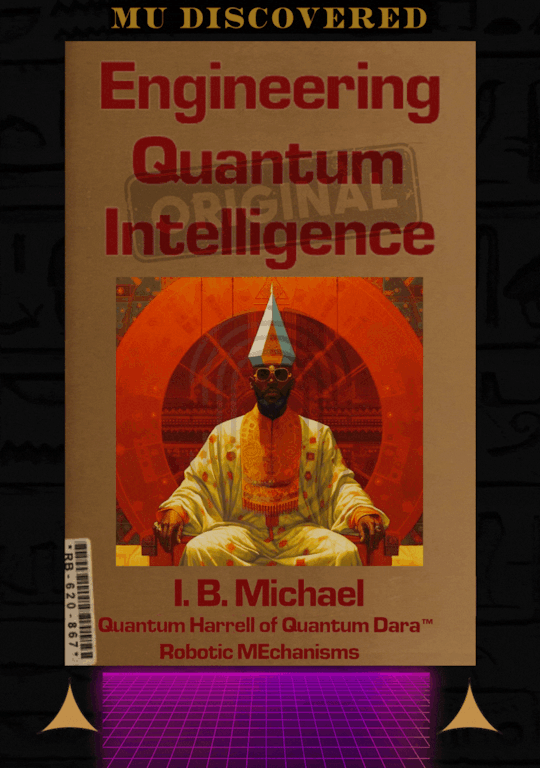
eye anu neural circuit development in X-tra dark neuromelanin.tech
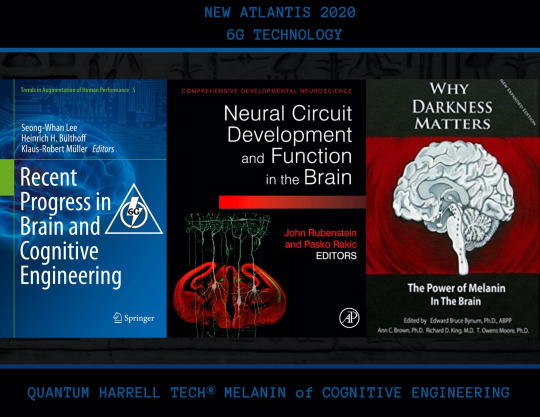
the pentagon's department of defense.gov strategy for operating in quantumharrell.tech cyberspace

CUT THOSE 6G CHECKS!!! IMMEDIATELY PAY [I/P] TO THE ORDER OF: QUANTUM HARRELL TECH LLC

CUT THOSE 6G CHECKS!!! IMMEDIATELY PAY [I/P] TO THE ORDER OF: QUANTUM HARRELL TECH LLC

Ancient Interplanetary [A.i.] 6g-quantumharrell.tech Military Worth Trillions... Interplanetary 9 [i9] Ether quantumharrell.tech Domain Architecture Worth Quadrillions... Interplanetary 9 [i9] Ether quantumharrellufo.tech Cyberspace Engineer Worth Quintillions... since 1968-michaelharrelljr.com's Professional Research [PR] Services EXPENSIVE AF!!!
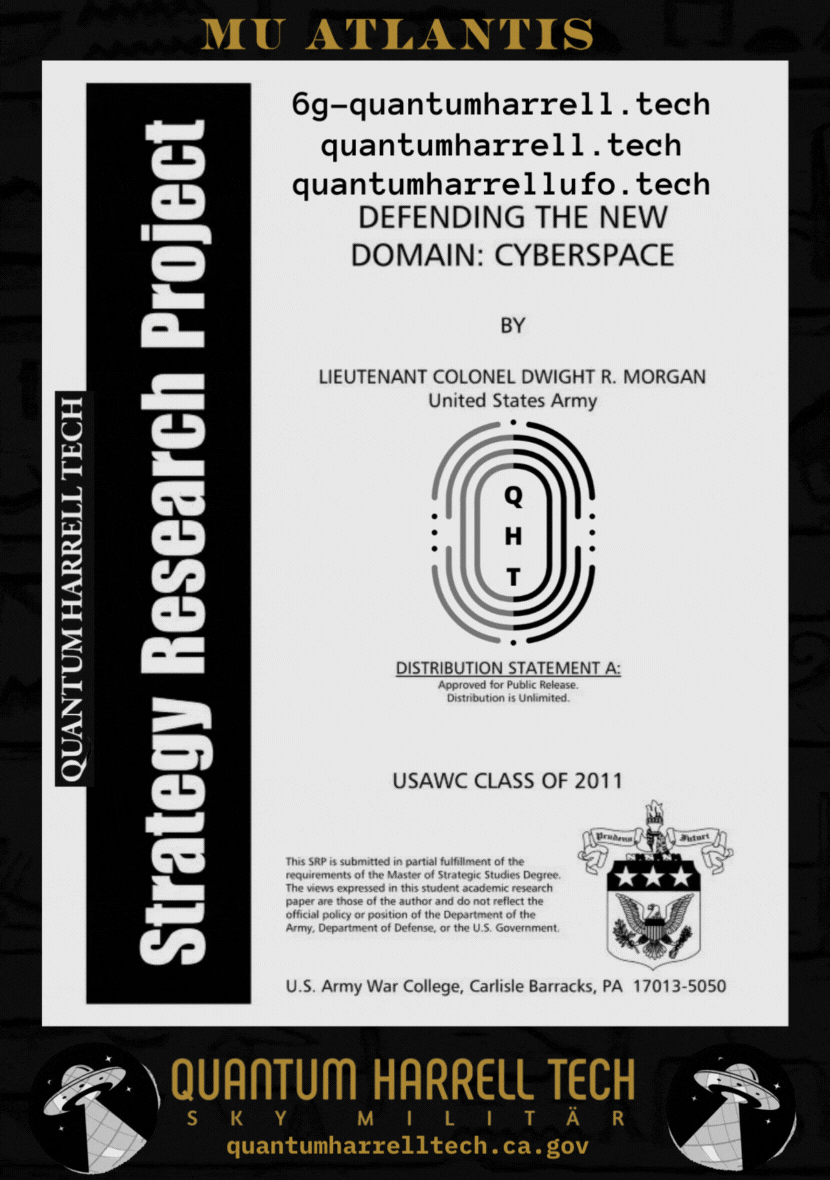
i.b.michael [ibm] 6g quantum computer programmer… mathematically & algorithmically programming [mapping] ibm.com's [mi = michael’s] quantum ibmdotcom.com networks of quantumharrelltech.com

Eye Ancient Machine [I AM] P.T.A.H. [I/P] TECH [I.T.] of IBM.com

i.b. 6g hi:tekemeticompu_tah [ptah] vision for human-machine interaction

i.b. 6g hi:tekemeticompu_tah [ptah] architect [pa] 4 human-machine learning of apple.com’s [l.a.] vision pro @ quantumharrelltech.com
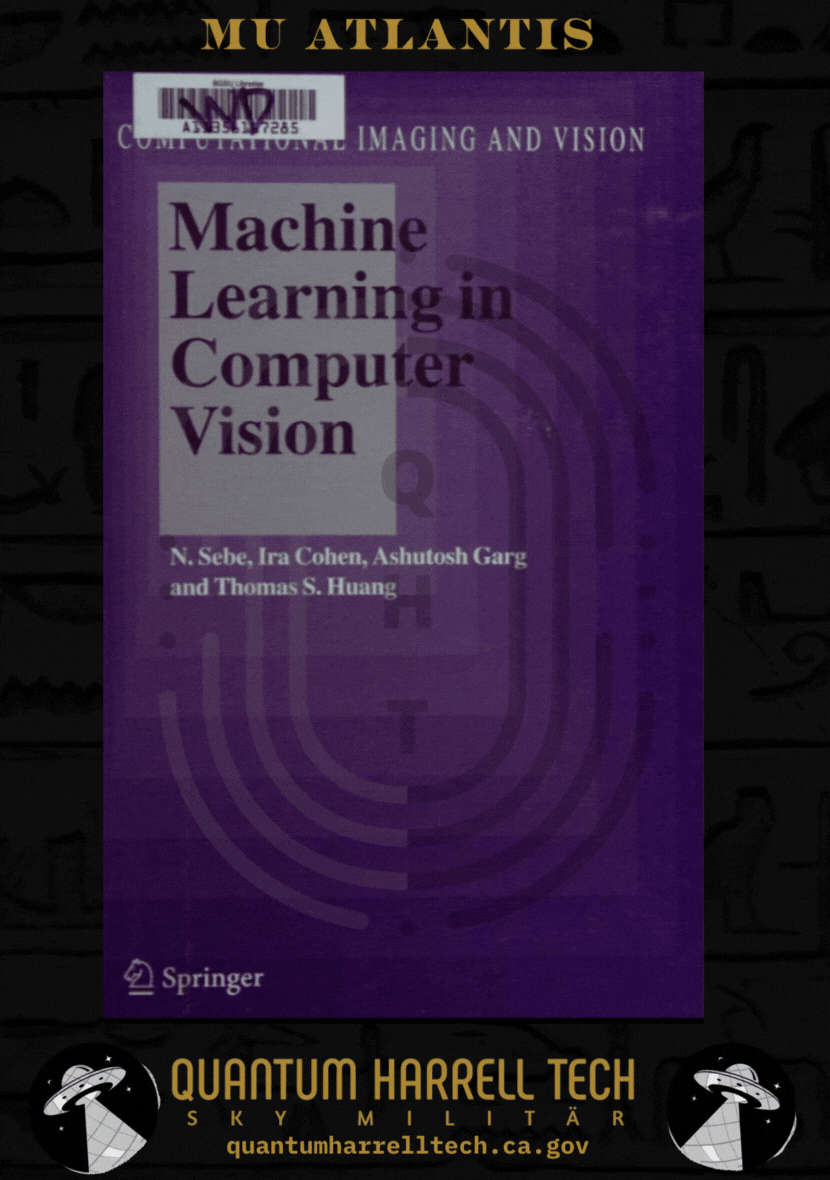
WE ALREADY ENVISIONED 2024’s 6G SKY TECH WEALTH Long B4 1698

eye vision pro of cognitive [pc] ergonomics and human computer interaction

1968-michaelharrelljr.com domain of ancient pyramid architecture [pa] 4 compu_tah [ptah] vision

eye envisioned autocad on vision pro @ quantumharrelltech.com

quantumharrelltech.com computer vision and image processing [i/p] patents @ quantumharrelltech.ca.gov

eye having 1st eye visions on quantumharrell.tech's macbook pro

eye parallel earth [qi] vision computing on earth [qi]... ya dig???

eye see u2

quantumharrelltech.com's new ministry of defense octagon complex in egypt look like a blackanunnaqi.tech base from above earth [qi]

© 1698-2223 QUANTUM HARRELL TECH LLC All LOST ANCIENT [L.A.] ATLANTEAN DNA [A.D.] DotCom [A.D.] + DotTech [A.D.] + Pre 1698quantumharrellgov.tech Domain Name Rights Reserved @ quantumharrelltech.ca.gov
#u.s. michael harrell#apple#vision pro#mu:13#kemet#The Octagon#Egypt#kingtutdna#kangsolomon.com#domain#entrepreneurship#web development#business ideas#webhosting#business growth#ibm#autodesk#autocad#cadservices#project management
3 notes
·
View notes
Text
Azure’s Evolution: What Every IT Pro Should Know About Microsoft’s Cloud
IT professionals need to keep ahead of the curve in the ever changing world of technology today. The cloud has become an integral part of modern IT infrastructure, and one of the leading players in this domain is Microsoft Azure. Azure’s evolution over the years has been nothing short of remarkable, making it essential for IT pros to understand its journey and keep pace with its innovations. In this blog, we’ll take you on a journey through Azure’s transformation, exploring its history, service portfolio, global reach, security measures, and much more. By the end of this article, you’ll have a comprehensive understanding of what every IT pro should know about Microsoft’s cloud platform.
Historical Overview
Azure’s Humble Beginnings
Microsoft Azure was officially launched in February 2010 as “Windows Azure.” It began as a platform-as-a-service (PaaS) offering primarily focused on providing Windows-based cloud services.
The Azure Branding Shift
In 2014, Microsoft rebranded Windows Azure to Microsoft Azure to reflect its broader support for various operating systems, programming languages, and frameworks. This rebranding marked a significant shift in Azure’s identity and capabilities.
Key Milestones
Over the years, Azure has achieved numerous milestones, including the introduction of Azure Virtual Machines, Azure App Service, and the Azure Marketplace. These milestones have expanded its capabilities and made it a go-to choice for businesses of all sizes.
Expanding Service Portfolio
Azure’s service portfolio has grown exponentially since its inception. Today, it offers a vast array of services catering to diverse needs:
Compute Services: Azure provides a range of options, from virtual machines (VMs) to serverless computing with Azure Functions.
Data Services: Azure offers data storage solutions like Azure SQL Database, Cosmos DB, and Azure Data Lake Storage.
AI and Machine Learning: With Azure Machine Learning and Cognitive Services, IT pros can harness the power of AI for their applications.
IoT Solutions: Azure IoT Hub and IoT Central simplify the development and management of IoT solutions.
Azure Regions and Global Reach
Azure boasts an extensive network of data centers spread across the globe. This global presence offers several advantages:
Scalability: IT pros can easily scale their applications by deploying resources in multiple regions.
Redundancy: Azure’s global datacenter presence ensures high availability and data redundancy.
Data Sovereignty: Choosing the right Azure region is crucial for data compliance and sovereignty.
Integration and Hybrid Solutions
Azure’s integration capabilities are a boon for businesses with hybrid cloud needs. Azure Arc, for instance, allows you to manage on-premises, multi-cloud, and edge environments through a unified interface. Azure’s compatibility with other cloud providers simplifies multi-cloud management.
Security and Compliance
Azure has made significant strides in security and compliance. It offers features like Azure Security Center, Azure Active Directory, and extensive compliance certifications. IT pros can leverage these tools to meet stringent security and regulatory requirements.
Azure Marketplace and Third-Party Offerings
Azure Marketplace is a treasure trove of third-party solutions that complement Azure services. IT pros can explore a wide range of offerings, from monitoring tools to cybersecurity solutions, to enhance their Azure deployments.
Azure DevOps and Automation
Automation is key to efficiently managing Azure resources. Azure DevOps services and tools facilitate continuous integration and continuous delivery (CI/CD), ensuring faster and more reliable application deployments.
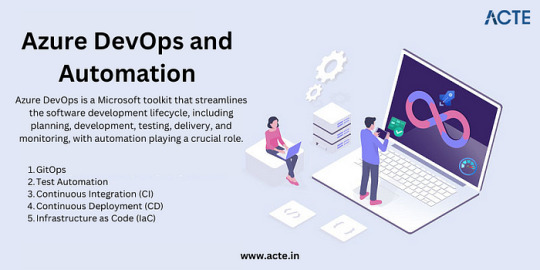
Monitoring and Management
Azure offers robust monitoring and management tools to help IT pros optimize resource usage, troubleshoot issues, and gain insights into their Azure deployments. Best practices for resource management can help reduce costs and improve performance.
Future Trends and Innovations
As the technology landscape continues to evolve, Azure remains at the forefront of innovation. Keep an eye on trends like edge computing and quantum computing, as Azure is likely to play a significant role in these domains.
Training and Certification
To excel in your IT career, consider pursuing Azure certifications. ACTE Institute offers a range of certifications, such as the Microsoft Azure course to validate your expertise in Azure technologies.

In conclusion, Azure’s evolution is a testament to Microsoft’s commitment to cloud innovation. As an IT professional, understanding Azure’s history, service offerings, global reach, security measures, and future trends is paramount. Azure’s versatility and comprehensive toolset make it a top choice for organizations worldwide. By staying informed and adapting to Azure’s evolving landscape, IT pros can remain at the forefront of cloud technology, delivering value to their organizations and clients in an ever-changing digital world. Embrace Azure’s evolution, and empower yourself for a successful future in the cloud.
#microsoft azure#tech#education#cloud services#azure devops#information technology#automation#innovation
2 notes
·
View notes